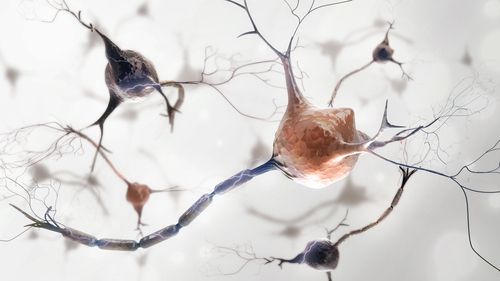Extended Protein Form Linked with Myelin Damage, May Underlie CMT, Mouse Study Finds
Written by |

A larger-than-normal version of myelin protein zero is associated with damage to myelin — the protective sheath covering nerve fibers — and may underlie the development of Charcot–Marie–Tooth (CMT) disease, a study in mice found.
The study “Upregulation of large myelin protein zero leads to Charcot–Marie–Tooth disease-like neuropathy in mice” was published in the journal Communications Biology.
CMT is a group of genetic disorders of the peripheral nerves — the network of nerves that connect the brain and spinal cord to muscles and to sensory cells throughout the body.
It is caused by mutations that either cause degeneration of nerve fibers (axons) or of the surrounding myelin, which promotes efficient transmission of nerve impulses. A deficiency in myelin proteins causes makes peripheral nerves gradually unable to transmit nerve signals from the brain to the body, and vice versa.
Most CMT cases are caused by defects in peripheral myelin proteins. This includes mutations in the MPZ gene, which provides instructions for myelin protein zero (P0).
More than 120 MPZ gene mutations are known to cause a form of CMT known as CMT1B. Other mutations may cause other disease types, including CMT2I, CMT2J , and dominant intermediate D.
P0 is an abundant myelin protein, produced by Schwann cells that form myelin in peripheral nerves.
It serves as an adhesion molecule, that helps “glue” myelin layers to one another, and tightly packs myelin around axons. In animal models, lack of P0 results in loss of myelin and CMT-like disease. “Therefore, P0 is an essential molecule for myelin formation and maintenance in the PNS [peripheral nervous system],” the researchers from Japan wrote.
Recently, it was discovered that a large version of this protein — called large myelin protein zero (L-MPZ) — is naturally produced in humans and several animals. The extended version of P0 is produced through a molecular mechanism known as translational readthrough.
This large version appears to have played an important role in the evolution of tetrapod animals, which include mammals. However, its particular roles are uncertain.
Similar to P0, L-MPZ is localized in myelin, which suggests it may play an equally important role in the formation and maintenance of this important sheath.
To clarify this, a team of researchers created two mouse models (L-MPZ mice), which either completely lacked P0 and only produced L-MPZ, or produced some P0 and increased levels of L-MPZ.
Motor tests, nerve conduction studies (that measure the conduction of nerve impulse) and detailed analyses of nerve fibers revealed that L-MPZ mice developed symptoms identical to those found in CMT patients.
Specifically, they showed motor problems and disrupted structure in their myelin around peripheral nerves, which caused extensive myelin loss or fragile myelin.
Axons also were damaged, with more small-caliber fibers and with disorganized functional domains, which are likely to perturb the interaction with supporting nervous system cells, known as glia.
The defects were most severe in mice completely lacking P0 and only producing L-MPZ, while animals able to produce some P0 had a milder disease.
“In summary, we have shown that changes in the amount of L-MPZ influences the formation and maintenance of myelin. Therefore, analyses of gene mutations that influence L-MPZ production and its function may be required for CMT patients of unknown etiology [cause],” the researchers wrote.
“These results highlight the importance of an appropriate L-MPZ/P0 ratio and show that aberrant readthrough of a myelin protein causes neuropathy [nerve damage],” they added.




